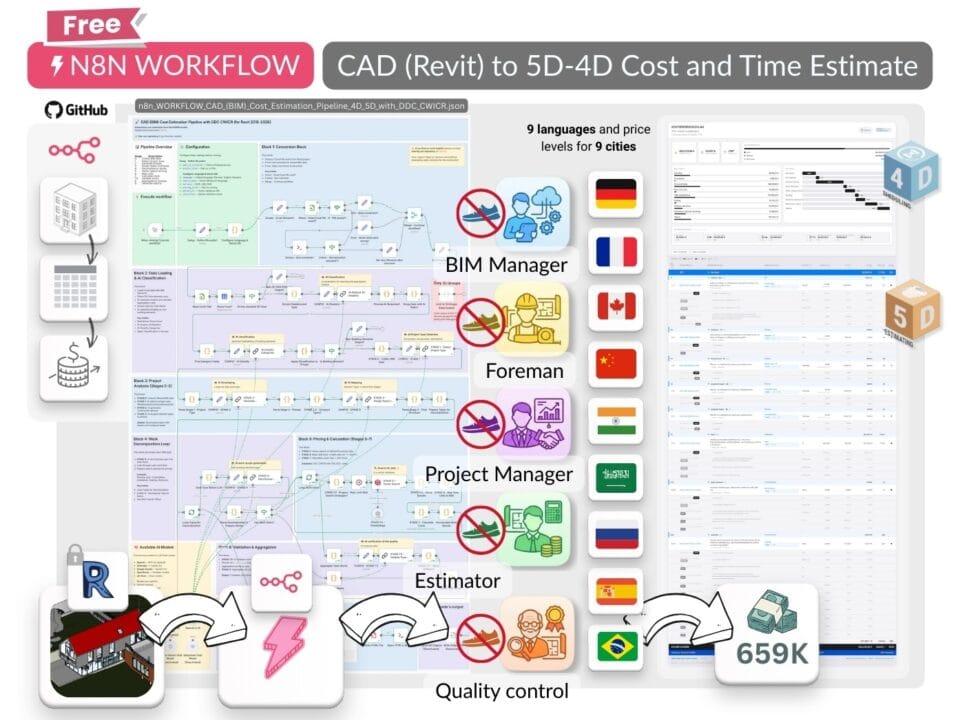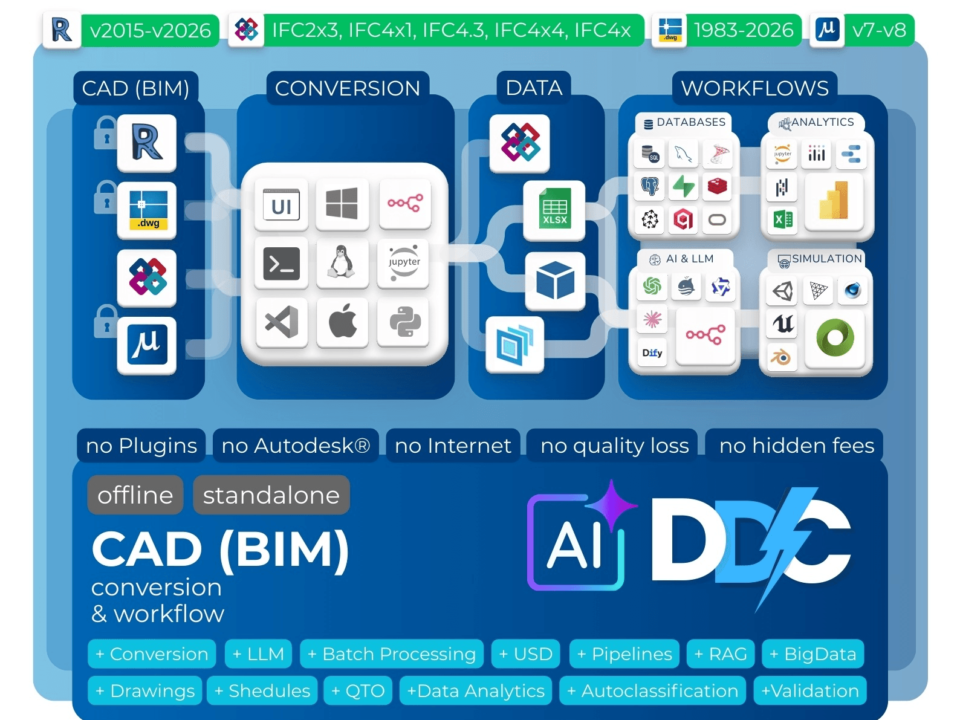🚷 In today's construction landscape, hashtag#BIM software is teeming with products offering limited hashtag#API functionality. This constraint hampers data processing and analysis. To extract the right information, users must write extensive code or navigate multiple API layers. Small BIM developer teams find themselves entangled in crafting queries to interface with larger products, while hashtag#CAD-BIM giants focus on creating "new and simple" one-tier API platforms like Forge and BIMcloud.
🌒 What's the Deal with All These APIs? In simple terms, an API is a "word" that replaces a block of code, making tool functionalities more accessible. APIs (SDKs, Toolkits) arise from user demands when existing interfaces and buttons fall short. This need for expanded access traps developers of closed applications, who then have to offer broader tool or data access. Consequently, there's a surge in BIM hashtag#OpenSource tools mimicking proprietary functionalities.
The main API queries in hashtag#closedBIM (like hashtag#Revit SDK, hashtag#Archicad API) and hashtag#openBIM (like xBim toolkit, IfcOpenShell) tools involve extracting specific "pieces of information" from models as lists or tables.
🌒 Why Extract Tables and Lists from Models? Creating universal API queries for every scenario and company is nearly impossible. Thus, most BIM solutions focus on generating or exporting data in tabular formats, which have existing, user-friendly libraries and tools.
Consider two libraries handling the same data quality: openBIM - IFC (Express)- IfcOpenShell and noBIM - DataFrame (CSV) - Pandas.
🌊 A Tale of Two Libraries: IfcOpenShell sees 900 daily downloads (https://lnkd.in/eWehgnPT), whereas Pandas boasts 9 million daily downloads (https://lnkd.in/ePWbDuCq). The difference? The former deals with complex tree structures, while the latter handles straightforward tables.
Ultimately, projects inevitably translate into lists and tables, a format already familiar to millions of professionals and major construction firms.
Key Takeaway: The sooner you acquire a comprehensive data table for your project, the faster you can automate processes without mastering vendor-specific APIs.






















